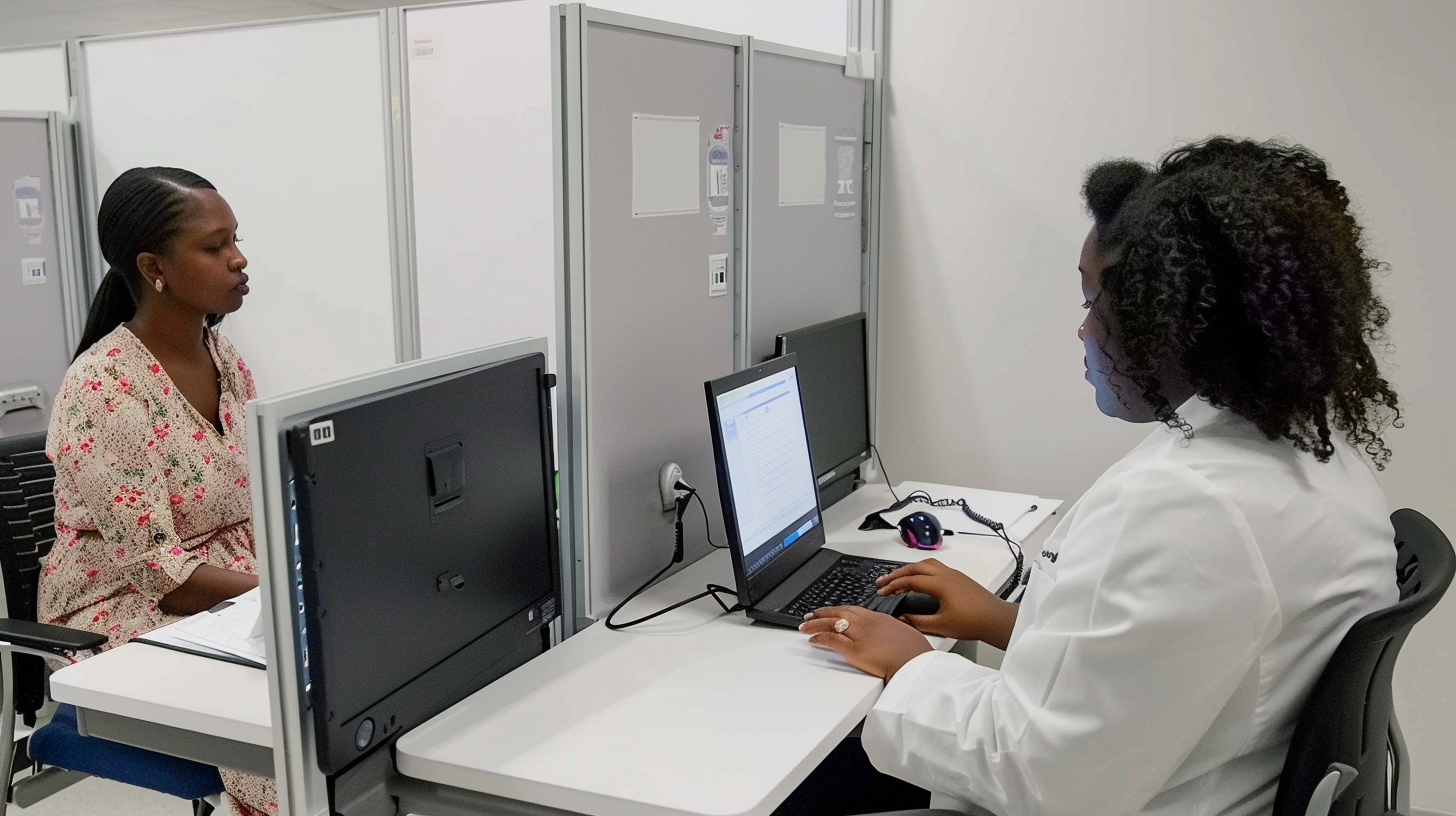Updated 2/12/2025
There is a reason students study tirelessly for the MCAT, spending long nights in the library huddled over piles of books and revising their notes to perfection. The MCAT, which stands for Medical College Admission Test, is a crucial exam designed to test medical students at a high level. Those pursuing a career in medicine or healthcare must study and prepare because MCAT scores can make or break a medical school application.
The MCAT has an intimidating reputation for a reason. Not only is it crucial to an outstanding application, but the test is also known for being rigorous. One of the most popular questions students like to ask is, “How long is the MCAT?”
So, How Long is the MCAT?
Compared to most standardized tests, the MCAT is remarkably long. Previous to the MCAT, the vast majority of students only have experience with a few standardized tests. The most popular are the PSAT and SAT. The PSAT clocks in at 2 hours and 45 minutes. while the SAT is 3 hours plus another 50 minutes for those that choose to take the essay. For U.S. administrations, the SAT essay was discontinued a few years ago, and the current SAT is administered in about 3 hours without an essay.
Most Advanced Placement tests share a similar time range, and final exams rarely last longer than 3 to 4 hours.
The MCAT completely dwarfs these times. Without breaks, it takes students 6 hours and 15 minutes to complete. With breaks, this duration increases by an hour and 18 minutes to 7 hours and 33 minutes. Even for the most disciplined student, this is an exceptionally long period to sit and take a vital exam with absolute focus.
Why the MCAT’s Length Intimidates Students
Because most students likely have no experience taking an exam as long as the MCAT, it is no surprise that the strenuous duration presents a massive barrier to many people taking it for the first time. Students often have trouble focusing for extended durations with the rigor that the MCAT demands. This duration makes it hard for students to answer questions quickly and think with clarity. More importantly, it also leads to students managing their time poorly throughout the exam and experiencing intense stress.
Additionally, because of the high stakes of the MCAT, some students create additional pressure on themselves when they take it. The best way to fix this is practice. Start by reading articles like this one from the Association of American Medical Colleges (AAMC) about preparing for the MCAT. Students must find the right resources to prepare for the exam and create mock MCAT sessions to increase their confidence. It is also critical for students to rest well the day before the exam and eat a healthy meal before testing.
What to Expect and How to Prepare Logistically
Check-In and Identification
On test day, arriving early is key. When you arrive at the test center, you’ll check in with a test administrator who will verify your identity. Be sure to bring your valid, government-issued MCAT-accepted ID. You’ll also have your palms digitally scanned and a test-day photograph taken—all of which are standard security measures to confirm your identity and prevent fraud. Arriving early helps with check-in and gives you time to settle in before the exam begins.
What’s Allowed
To ensure a smooth testing experience, familiarize yourself with what you can bring into the testing room:
- Permissible Items:
- A noteboard booklet (provided by the test center) for note-taking
- A fine-point marker (also provided)
- Personal items such as a clear water bottle or small snack may be allowed during breaks—but only if the test center guidelines permit them.
- During Breaks:
- You have two short 10-minute breaks and one 30-minute mid-exam break. Use these breaks wisely: check the test center’s clock (ask staff if you’re unsure where to find it) and monitor your time so you don’t accidentally extend your break or lose precious testing minutes.
- Remember, any unused time from a section or skipped break does not roll over to the next section.
Security and Protocols
The MCAT is administered under strict protocols to maintain fairness and integrity:
- Strict Rules:
- You must adhere to the MCAT Examinee Agreement, which outlines what is—and isn’t—allowed in the testing room.
- Electronic devices, personal notes, or any unauthorized materials are strictly prohibited.
- Reporting Irregularities:
- If you observe any suspicious behavior or security breaches before, during, or after the exam, you are encouraged to report them immediately. The AAMC provides multiple avenues for reporting, including a dedicated STOPit! app, a web form, or a direct phone line.
- If you observe any suspicious behavior or security breaches before, during, or after the exam, you are encouraged to report them immediately. The AAMC provides multiple avenues for reporting, including a dedicated STOPit! app, a web form, or a direct phone line.
- Overall Protocols:
- The security measures (like digital palm scans and photo capture) help prevent test fraud and ensure that every examinee competes under the same conditions.
- Familiarize yourself with these policies in advance to avoid surprises on exam day.
A Look at the MCAT Schedule
Students should not only ask, “How long is the MCAT?” but also question exactly how the exam separates its sections so they can adequately prepare mentally and physically. One of the worst simple mistakes students make is not familiarising themselves with the schedule, which can lead to increased anxiety on the day of the MCAT.
Here is a precise look at how the MCAT is broken down with information on each section. It is also important to note that this schedule does not account for the time it takes for students to arrive and make sure they are registered correctly for the exam. It is good practice to show up early in case there are any issues.
| MCAT Section | Length | Total Time |
|---|---|---|
| Examinee Agreement | 8 minutes | 8 minutes |
| Tutorial (optional) | 10 minutes | 18 minutes |
| Chemical and Physical Foundations of Biological Sciences | 95 minutes | 1 hour and 53 minutes |
| Break (optional) | 10 minutes | 2 hours and 3 minutes |
| Critical Analysis and Reasoning Skills | 90 minutes | 3 hours and 33 minutes |
| Break (optional) | 30 mimutes | 4 hours and 3 minutes |
| Biological and Biochemical Foundations of Living Systems | 95 minutes | 5 hours and 38 minutes |
| Break (optional) | 10 minutes | 5 hours and 48 minutes |
| Psychological, Social, and Biological Foundations of Behavior | 95 minutes | 7 hours and 23 minutes |
| Void Question | 5 minutes | 7 hours and 28 minutes |
| Satisfaction Survey (optional) | 5 minutes | 7 hours and 33 minutes |
Examinee Agreement
8 Minutes Long
The examinee agreement is the first thing students must complete after entering the MCAT testing room. It is a document that all standardized tests have in some form to ensure the integrity of the test and the integrity of the students taking the test. It gives guidelines for what a student is allowed or not allowed to talk about after the test. This agreement is available for students to look over in advance in the MCAT Examinee Agreement.
Essentially, the agreement outlines examples of banned actions and what the AAMC will do if the student violates the examinee agreement. This section of the test rarely takes long, but it is wise for students to read over the entire document to ensure they know what they are promising. Some students are unaware of the penalties that may occur if they break the agreement.
Tutorial (Optional)
10 Minutes Long
Here is the first optional section of the exam. It is only 10 minutes long, so either way, it does not take too much of the student’s time. The tutorial is a time for students to get used to the MCAT exam’s features and functions, like highlighting something or strikethrough when necessary. Because it is optional, students may choose to participate in the tutorial or not. It is probably best for most students to have practiced at home before the exam.
Chemical and Physical Foundations of Biological Sciences
95 Minutes Long
The Chemical and Physical Foundations of Biological Sciences is the first section of the MCAT exam, and it covers topics concerning the body’s mechanical, biochemical, and physical operations. Students should understand fundamental ideas from biochemistry, biology, general chemistry, organic chemistry, and physics. There are a total of 59 questions, with 10 sets of passage-based questions and 15 independent questions.
Break (Optional)
10 Minutes Long
Here is the first break that students are allowed to take. Students may eat or go to the bathroom during breaks. They can also skip the break and move onto the next section. This does not give anyone extra time, though.
Critical Analysis and Reasoning Skills
90 Minutes Long
The second section of the MCAT revolves around assessing the student’s verbal reasoning skills and the ability to approach problems logically. There are a total of 53 questions in this section, and all are part of passage-based sets.
Break (Optional)
30 Minutes Long
Interestingly, this is the second and the longest break allotted to students. All the previous rules apply, as students can also skip this break. By the end of this break, the student has been taking the MCAT for 4 hours and 3 minutes. 4 hours is a long time, so many eat during this time.
Biological and Biochemical Foundations of Living Systems
95 Minutes Long
Students are now in the third section of the MCAT, which tests the candidate’s knowledge of physical and chemical science concerning multiple fields like biochemistry, biology, organic chemistry, general chemistry, and physics. This section has 59 questions and is like the first section because 15 questions are independent, while the other questions are in 10 passage-based sets.
Break (optional)
10 Minutes Long
Here is the last break of the MCAT. It is only 10 minutes long, and the same rules continue to apply. Students can choose to skip this break.
Psychological, Social, and Biological Foundations of Behavior
95 Minutes Long
After a grueling 5 hours and 48 minutes, students have reached the last section of the MCAT. This section tests the student’s comprehension of a person’s behavioral tendencies and their action’s correlation to their health. The questions cover fields like psychology, biology, and sociology. As with previous sections, there are a total of 59 questions with 15 independent questions and 10 passage-based sets of questions.
Void Question
5 Minutes Long
By this time, students have finished the majority of the test. The void question is something students must answer when they decide if they would like to void their test or not. If they chose to void their test, they are treating it like it never happened. Students must still pay for the test, and it does count for the times they are allowed to take the MCAT. However, the test does not get recorded, and schools cannot see if the student ever voided an MCAT. There are quite a few reasons why a student would want to or wouldn’t want to void their MCAT, but it is crucial to have a plan before taking the exam.
Satisfaction Survey (optional)
5 Minutes Long
This survey is the final part of the MCAT testing period and is optional. Examinees have the option to fill out a survey detailing their experiences with the MCAT. It does not take very long, and each student can decide if they want to fill it out or not.
How International Medical Aid Can Help
By now, it is clear that the answer to the question, “How long is the MCAT?” is that it is a very lengthy and arduous test. Most students just won’t be prepared without the right resources and guidance. Furthermore, while the MCAT is essential to medical school applications, there are other things students need for a well-rounded application, like internships.
Luckily, International Medical Aid has a fantastic program that focuses on providing excellent medical school admissions consulting. Not only do we release many of our top-tier resources for free, but we also provide personalized strategy sessions, medical school interview preparation, and much more. Additionally, we offer many internships in the international healthcare field, like Pre-PA Internships and Pre-Medicine Internships. There is a world of opportunities waiting, so explore your options today!





